Stand up architecture
Maya analyse
Different outputs from Grasshopper are analysed in Maya. I used Maya in combination with the Toi sunsimulator to analyse the open and closed facade by several sun positions and seasons. This are some of the results:
Incoming daylight
Open facade
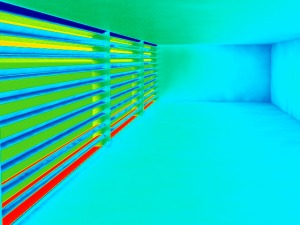
Closed facade
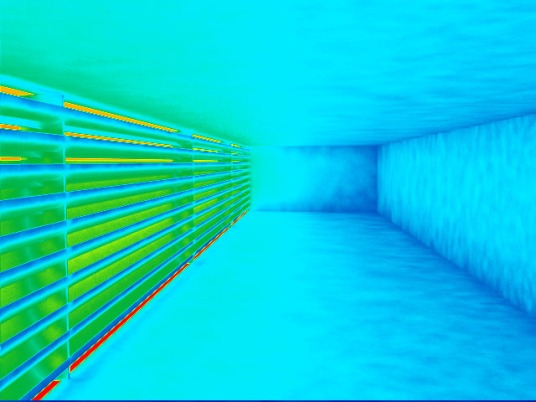
View
Closed facade
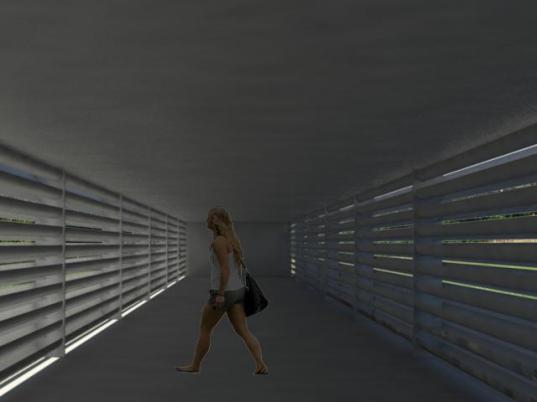
Open facade
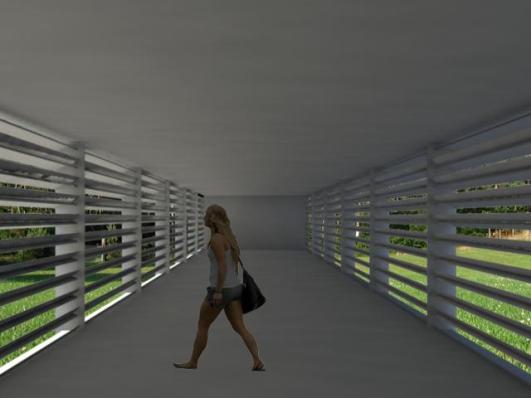
Ecotect analyse
Ecotect is used for Raytracing and the daylightfactors in the open and closed
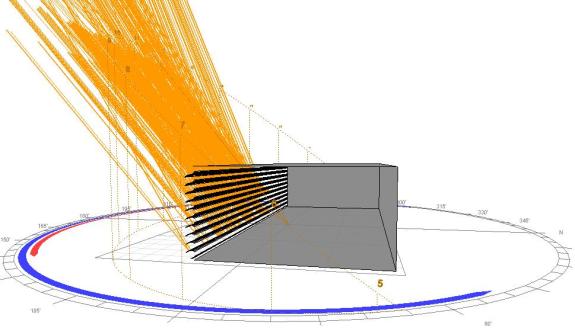 ]
]
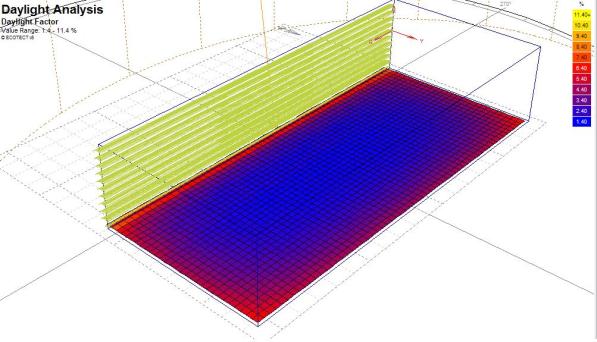
Ecotect and Maya using to analyse
After finishing the facade in Grasshopper, I try now to import it into Maya. Here I can do some visualisation to look how it works in a virtual world using the sun simulator and mental ray for the material properties. I want to use Ecotect to do some real analyzing and testing. This are the first images from a small test in it:
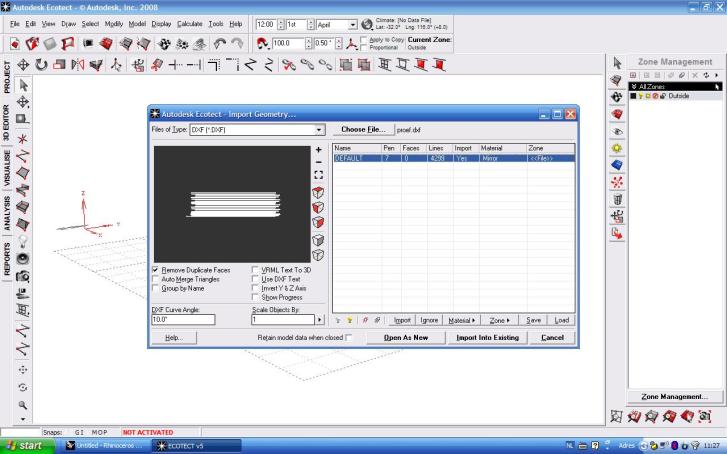
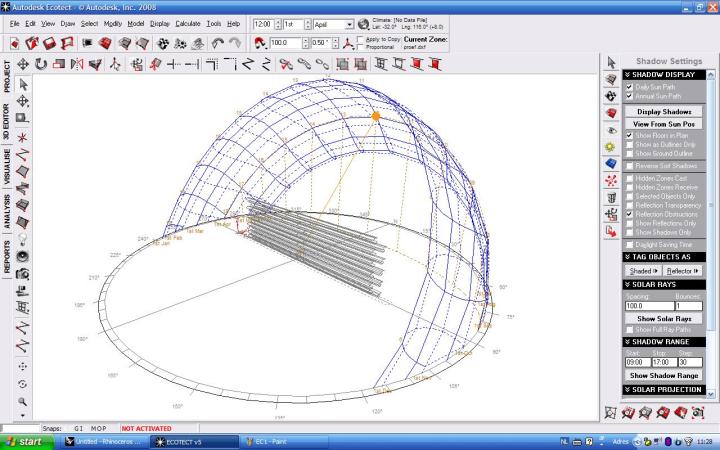
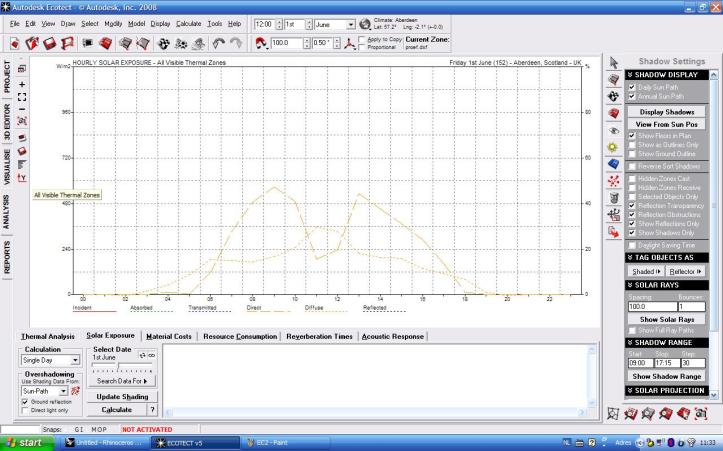
Grasshopper modeling

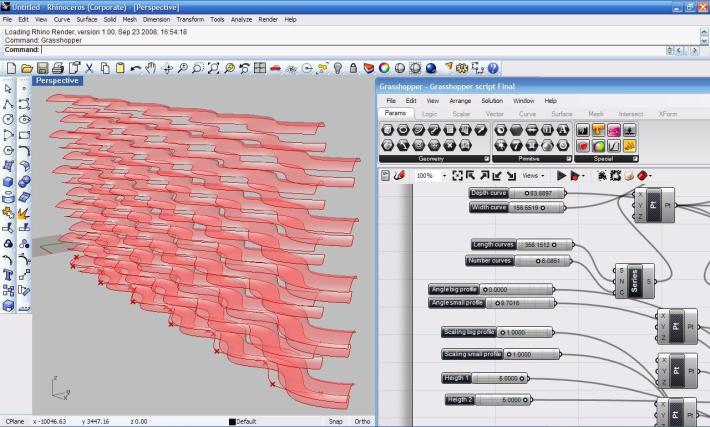
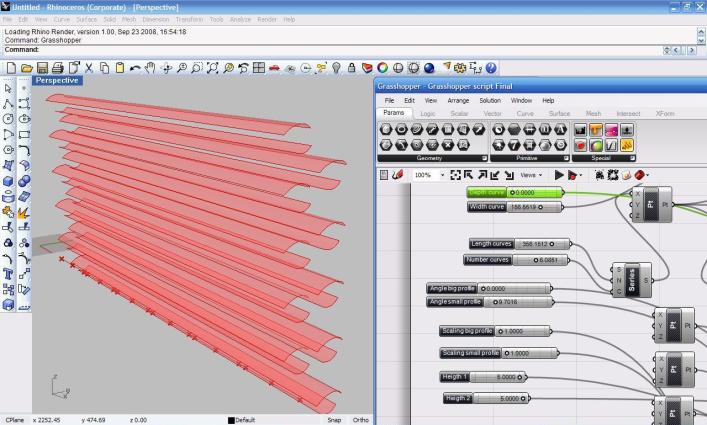
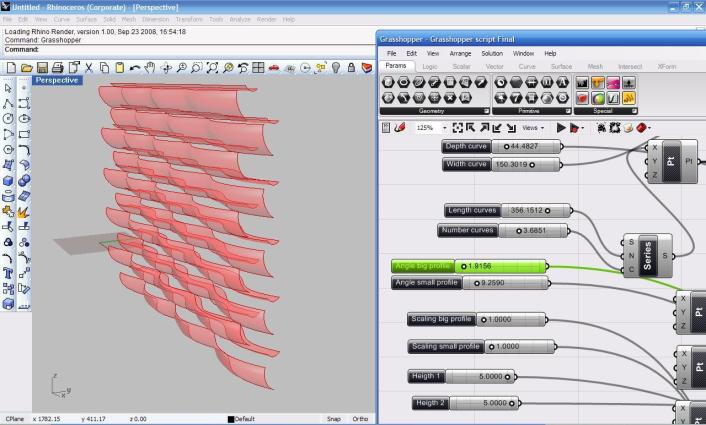
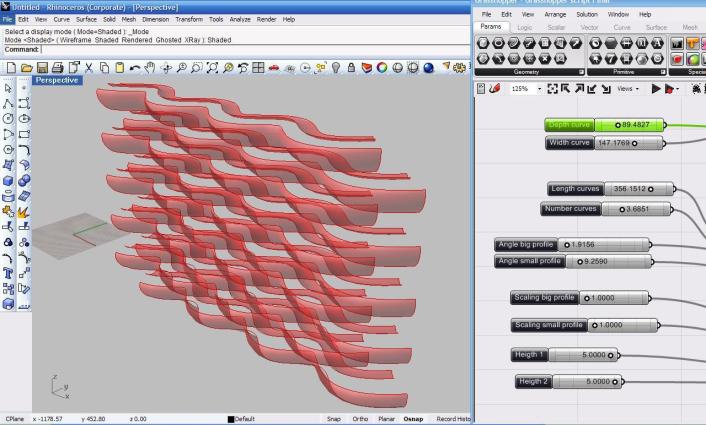
Prototyping
A prototyping session helped me to develop the facade system further. By reading some books I now understand that the choise of material is very important for the effect. The best testing of light system is to work with real models first, to understand how it works in real. To research this I tried to develop differend prototypes. This test is done with white paperboard, because of its diffuse effect. The next prototyping session will be done with aluminium, because of it’s mirroring effect. The prototype showed me some things that didn’t work as well. Then I can see the differance between the materials. The system has to be developed further in 3D to work also with the azimut of the sun. My idea is to make a parametric model in Grasshopper.
At first I tried to design a component that was impossible for the sun to come through when the facade is open, and come through when the facade is closed. There were a lot of differend varations which didn’t work. Because it’s hard to see all the mirroring directions of the sunbeams at differend sun directions in the open and closed type. This is the best result for now. This result is tested in the prototype:
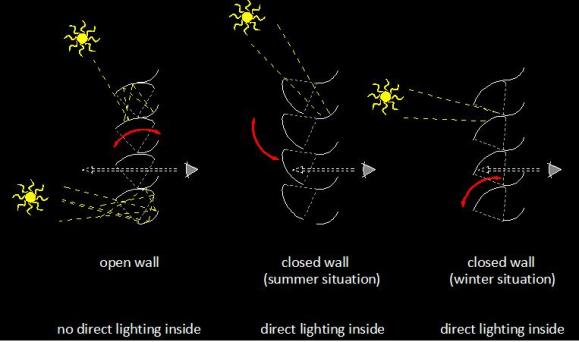
Some pictures of the experiment with the open facade:
The plan is also important because of the azimut of the sun. I try to develop the system more to a sort of bone structure.
The closed facade, where direct light can come through:
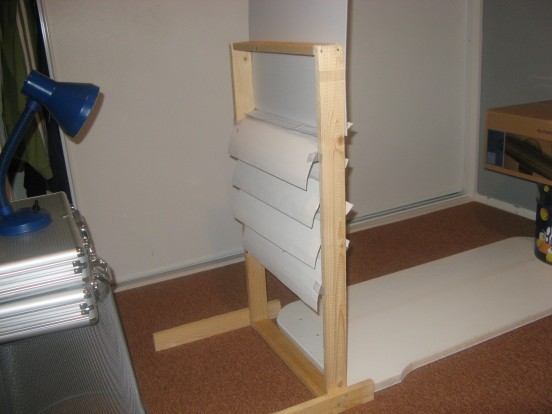
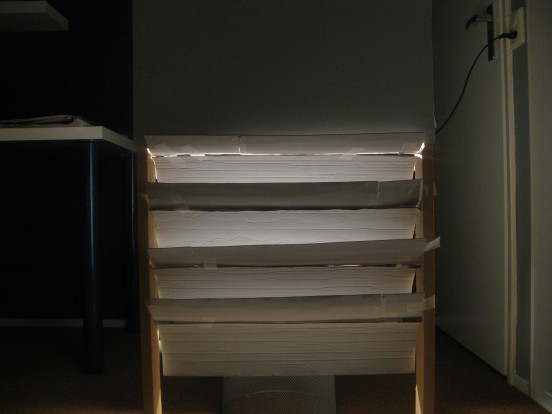
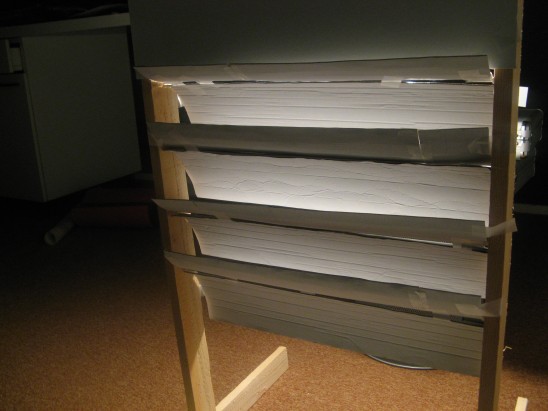
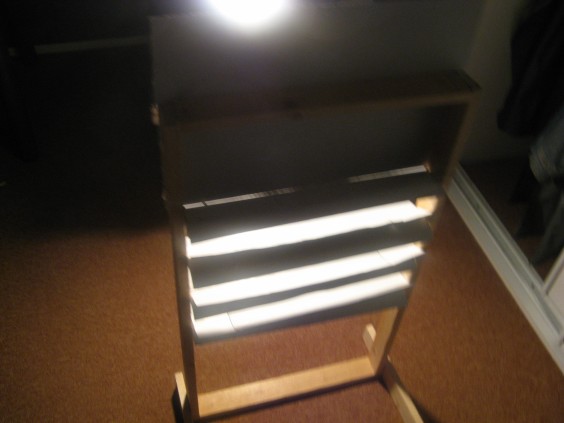
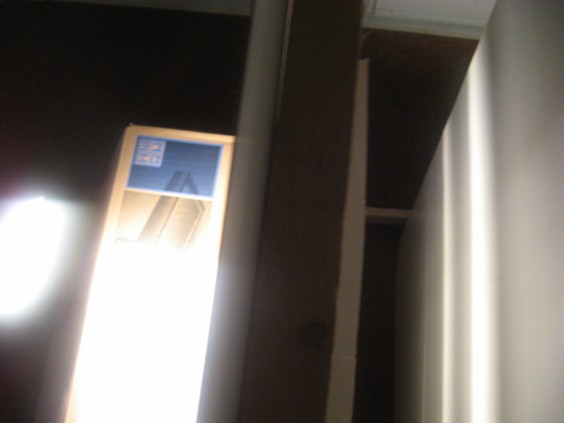
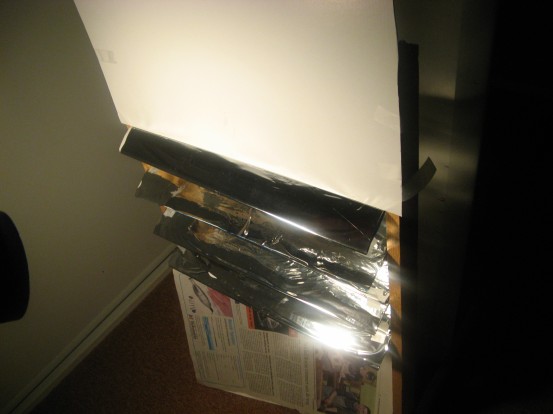
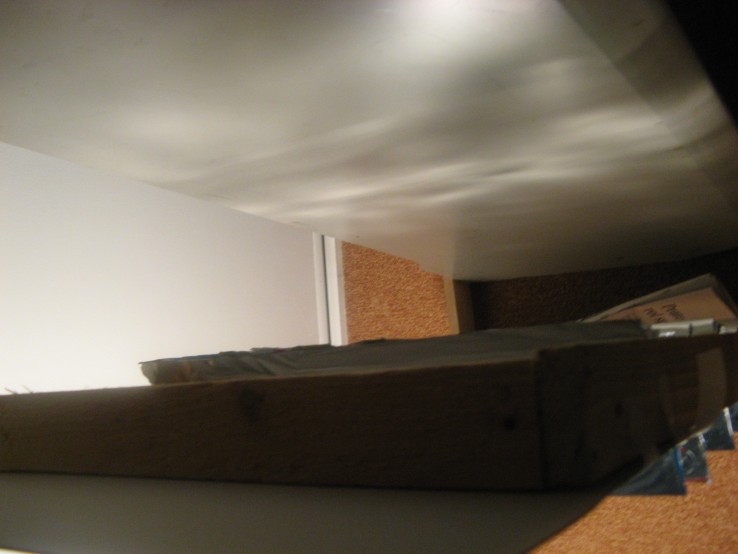
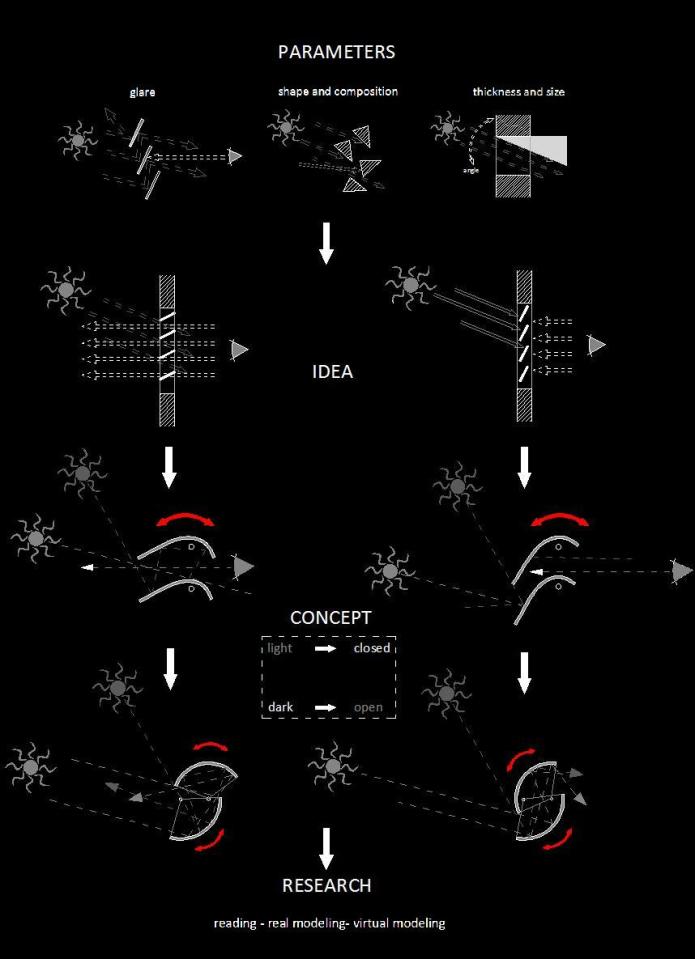
from daylight into darkness
Thanks for the feedback. This is a more devined explanation about the research topic.
Question 1)
– People can look maximum through a facade and there is minimum light coming in?
– People cannot look through a facade and there is maximum light coming in?
The overall idea is to design a sort of component, that is able to let in sunlight or not. When sunlight comes in, there is no possibility to look through it. When there is no sunlight getting through, it is possible to look through. This is a sort of relation, the more it opens, the less light comes in. Instead of a transparent wall = light, a closed wall = darkness.
Hypothesis and testing: the idea is to look at first to all the different parameters (input and output). Then it is possible to design some optional solutions. I think a component is a good thing to test in models and prototypes. Computer software can be very useful by further hypothesis. I hope that the process will be a combination of creative- and engineering methods.
Question 2)
– how should the variation of sunlight be translated into a facade pattern?
The idea is to make a component that can be used as an element in wall design. The variation in light and dark of this component can be useful for a sort of pattern of this wall.

Hypothesis and testing: If the component works, it is possible to make it parametric in Microstation. It is possible to paste and copy this element in a composition and then the experiments begin….
What the results will be stays a question for now.
Question 3)
– Can a straight wall be effective for all the sun directions?
This question is a bit a sideway from the experiment and process. Maybe it is possible to find an answer on this question in this experiment. It could be that this tells me something what the sun direction can do for the form and composition of the wall. Effective? It could be, but maybe the variation in light, dark and everything between this is enough to get an extraordinary result.

Topic: Daylight and sun studies
In an earlier design project it was the aim to develop a materials pavilion into a machine where people could find and search material samples. The interesting part was an almost closed facade out of panels of aluminium. Some of those panels were automatic moveable, so they could open and close to get light inside the pavilion. So it is normally quit dark without artificial light and people wouldn’t be able to look through the facade. The more transparent in a facade the more sunlight comes into the building and visitors can look through it.
Questions:
1) What happens if we want to switch this process?
– People can look maximum through a facade and there is minimum light coming in?
– People cannot look through a facade and there is maximum light coming in?
2) Can sunlight design a facade?
– Can the variation of sunlight be translated into a facade pattern? (maybe related to question one)
3) Can a straight wall be effective for all the sun directions?
André said
That’s an interesting and fairly strong starting point, Tim.
Question 3 needs more definition of what the terms “straight” and “effective” mean, and if you can define those better, then you can also write some thoughts about how you would test the effectiveness of a straight wall (and, correspondingly, how you would improve the “straight” wall if you found that it was not “effective.”)
Question 2 is not a research question, but a simple question to which the simple answer is “Yes.” On that topic, though, you might ask something like: “how should the variation of sunlight be translated into a facade pattern in order to …. (whatever it is you’d like to achieve by these means.)?”
Then you would need to construct some hypotheses regarding types/methods of translation and test them against the desired outcome, perhaps changing the translation types/methods if the outcome was not as good as desired.
This is the hypothesis-and-test form of the design research iterative process which we described in the introductory lectures.
Question 1 is almost ready to begin experimenting on, if we read it in conjunction with the description of the pavilion above, but will also need further development of the proposed research process if that’s the one you choose.
Please try thinking about how you can test proposed designs/solutions in each of the three cases (questions) you’ve written, and post again for further feedback before Monday’s presentation.
André
axel said
Thanks for the first postings of ideas,
a few comments – it will be helpful to connect this to a context and also to specify the pavilion, if that is the intended application of the wall study. The scale of the wall and its position with respect to the person observing it effects all the phenomena you are describing.
FOr 1. – It might be helpful to look at some precedents of things that do accomplish what your questions are describing. For instance a baseball hat is an example of a piece of clothing with an aspect of “keep direct sunlight from hitting the eyes but allow for unobstructed views of the wearer.
For the second part – maximum light in but no views out – there is a geometric relation between the depth of the openings and the area of the openings. Also factors such as glare maybe important, which are hard to capture geometrically.
2. Sunlight will never design a facade – you have to, but youcould come up with parameters, and models that capture some of the things you care for and deploy it in the generation of a facade – those principles would have to be defined for instance in Mondays presentation.
3. The question if a straight wall can be effective – as Andre already asked – effective in what exactly- you need to define a context to evaluate what phenomena you intend to produce with your wall to be able to judge that.
The sunlight guided design of a wall is a classic design topic and has produced many strong architectural types in history, from the conical window cut outs in swiss houses in Graubuenden, to Corbusier’s modernist shadowing walls, to Jean Nouvel’s always broken kinetic metal veil in the institute de monde arab, looking forward to your proposal on Monday
Rudi said
I believe you should first focus on question 1. You might use the result of question 1 to address question 2. To address question 1, you can start with considering a very simple example, a venetian blind. If the sun stands high enough, a quasi horizontal orientation of the slats will block all of the direct sunlight and allow maximum see-through, a proper tilted orientation will maximize direct sunlight and block the view. Of course, this is too simplistic to achieve what you have in mind, but it can help to consider all the different parameters you need. For the slats: orientation, width of the slats, height of the opening; by analogy: orientation in the horizontal plane, width of the pening; etc.
André - AC said
That’s nice work with Grasshopper for the parametric/associative modeling, Tim, and a good combination of software tools to address different aspects of the problem. Clearly it lets you test a number of different configurations of your proposed ‘shading’ system which exceeds the number you could test physically within the given time.
It’s still hard to see how this would behave mechanically, however, except in the case where the louvers are rotated about a straight axis. For more complex configurations you need to make some proposals about what materials and assemblies or other systems would achieve the configurations you’re after.
André
Andre - AC said
So now that you’re getting results from the performance evaluations you’re running, what’s the feedback to your design / hypothesis (i.e. what modifications do the test results suggest as being necessary?) and to your research question(s)?
Andre